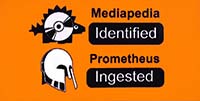
Music - Sectional Cataloguing Reference Guide |
Music
Acquisition and Cataloguing (MAC) Workflow
Currently the Music Acquisitions and Cataloguing Team (MAC) are only cataloguing/preserving electronic material which accompanies a monograph item containing more than 50% notated music, and/or sheet music which has an accompanying CD. Please see below:What do we Preserve" for guidelines on criteria. Stand alone CD’s are not covered by Legal Deposit at this stage, however, pending Commonwealth legal deposit legislation, these items can be voluntarily deposited via negotiations with publishers and creators. Where publications in these formats cannot be obtained on voluntary deposit, or where multiple copies are required, consideration may be given to purchase. Unlike other business units in the Library, MAC will take two copies of Nmt. Where information contained within a physical format publication also exists in a print version, the Library does not intend to preserve the physical format publication except where additional flexibility of use is provided by the electronic version. Where both online and physical formation versions of a publication are available, the Library prefers to preserve the online version. Where there are significant differences between the versions, both or all will be preserved. (as stated in ‘Preserving Australian physical format electronic publications – selection guidelines’ NLA Web) When an item is electronically preserved, it is the information content that will be preserved rather than the actual physical item. The physical item will be retained and housed in the appropriate stack location with other physical format materials i.e. MUS Nmt run
Workflow
guideline
The following is a workflow guideline for the Music Acquisitions and Cataloguing Unit. The Prometheus ‘Workflow Guide’ should be consulted for more detailed user instructions in addition to other functions of the Digital Preservation Workbench such as transferring jobs and capturing non-optical media, such as USB drives. Standard procedure will be to preserve the digital material at the same time it is being catalogued i.e. we will not stockpile Nmt material for preserving at a later date. Material
with an accompanying disc
Where there is an accompanying disc - Catalogue the printed music (monograph) as you would normally and add the following fields: 300 1 score (5 p.) ; 30 cm. + CD-ROM If
the disc contains sound files only (i.e. .WAV) then 538 System details The standard minimum system requirements note would be “System requirements: PC/Mac with CD-ROM drive, standard web browser.” However, check item information for any other requirements needed to run the program. This note can be as basic as “DVD player or similar” Enter the
System Details and File Format
information as an Annotation
to a Job’s Part within Prometheus. If the content of the CD is available on the internet a 538 and 856 Marc tag should be added to the record to indicate this 530 - - $a Audio files also available on the internet, address as at xx/xx/xxxx (date), http://www. etc 856 4 - $u http://www. etc Log
into
Prometheus
Firefox is the recommended web browser to use.
In the enter name of new job box - type or copy and paste the title and subtitle (removing GMD and delimiters) of the item from the 245 field of the bib record
In the enter name of part box, name the part as it appears on the physical disc. If there are multiple discs with the same title, add Disc 1 of x to the Title to clearly and uniquely identify these separate digital objects. If there is more than one disc and each disc has its own unique title, there is no reason to give the disc a number. See Naming Conventions for Job and Part naming guidelines. Add notes and metadata to part
Timing Notes: Initializing ; a pop up window of file types will display which can be closed ; imaging (can take up to 10 minutes) ; copying (approx. 2 minutes) ; completed ; pending (approx 2 minutes) ; analysing (approximately 2 minutes) ; completed. If this takes some time – click on the refresh button on the toolbar (two arrows in a circular motion)
Complete
catalogue record and add new holdings line (Voyager)
When preservation is completed, the bib record and holdings need to be completed.
Ensure other (physical) holdings lines have been completed i.e. Physical Nmt holding and NLmt if there is one. 852 8 - $b MUSICMIXED $k MUS Nmt $h 785.466 $i A132 866 - 0 $z N + CD (for sound disc) or 866 - 0
$z N + CD-ROM (for non-sound disc) End
processing
Place the disc into a jewel case, if one has not been provided. Attach a call number label to the front of the jewel case in the bottom left corner as well as the monograph/music Affix Prometheus Ingested sticker to the spine of the case to indicate that it has been digitally preserved in Prometheus.
Place in a plastic bag and send to Music Stack Write DP on the call number label of the CD/DVD case to indicate that it has been digitally preserved.
System DetailsWindows Minimum requirements for Sibelius 5 alone: Windows XP SP2 32-bit or Windows Vista 32-bit, 512MB+ RAM, 350MB hard disk space, DVD-ROM drive You must be running at least Windows XP Service Pack 2 to install and run Sibelius 5. If you have Windows 95, Windows 98, Windows Me, Windows 2000 or Windows NT 4.x, you need to purchase an upgrade to a more recent version of the Windows operating system. Mac Minimum requirements for Sibelius 5 alone: Mac OS X 10.4.9 or later or Mac OS X 10.5, 512MB+ RAM, 350MB hard disk space, DVD-ROM drive. Sibelius 5 is a Universal application, which means that it runs on both older Macs with PowerPC processors and new Macs with Intel processors. If you are running a version of Mac OS X earlier than Mac OS X 10.4, you cannot install and run Sibelius. You may want to upgrade Mac OS X now, although this normally incurs an upgrade fee. See www.apple.com for details. File
Formats
.pdf - Adobe Acrobat Document Stores test, images, sound and video in an openly documented file format which can be accessed by various software applications including free pdf reader applications. .SAR - Sibelius
Arrange Style Stores
musical
arrangements used
by Sibelius music notation software; allows songs with similar styles
to be
composed from the same basic configuration; may include instruments,
track
configurations, meter, tempo, and other settings. Sibelius 5Sibelius formated content will be ingested into Prometheus in the form of a PDF of the musical score rather than the full original Sibelius file format.
Naming
Conventions
When uniquely identifying Parts of a Job, please use the title which is printed on the CD/DVD case in preference to what is on the actual CD/DVD. MUSIC
PARTS Uniquely name each Part as it appears on the physical media label Example for single disc: Chord
Voicings for Composers, Arrangers, Songwriters
and Pianist or
Solo piano 2
Drumming
Steps
Vocalise
for Choir and Audio Track If there are multiple discs with the same title, please also add Disc 1 of x, to clearly and uniquely identify these separate digital objects. Example for multiple discs with same title such as Phantom Groove name the parts (Note: In this example the actual disc tiltle includes CD x):
Phantom
Groove CD 1 of 3
Phantom
Groove, CD 2 of 3 Phantom Groove, CD 3 of 3 NOTE:
If there is more than one disc
and each disc has its own title then there would be no reason to give
the disc
a number at all. Do's and Don'ts ReminderDo
Don'ts
What
do we
preserve?
Digital preservation guidelines - draft [http://ourweb.nla.gov.au/apps/wiki/display/mc/Digital+preservation+guidelines+-+draft] This
is to facilitate discussion while we're developing
guidelines for selecting materials to preserve. Brad and Wan looked at
a number
of CD-ROMs and disks in the Music Nmt run and came to the following
preliminary
principles:
2.
Material that
illustrates and enhances the content (e.g. Refinement of rhythm : a
practical
guide with supporting CDs for learning to perform
increasing challenging
rhythms) 3.
Recordings of
special events (e.g. Melbourne Arts Festival): likely to be unpublished
materials
2.
Recordings of music playing (e.g. a bonus CD for a collection of piano
music) 3.
If the item's
only reason for being in the Nmt run is being published or distributed
in
4.
PDF version of
the printed music Please
note the majority of materials in the Nmt run are
sound discs which have not been looked at. Nor have current intake
materials.
As more materials are looked at the guidelines can be refined. Associated PoliciesItems being collected and preserved should meet the selection criteria as set out in the NLA Collection Development Policy. The document ‘Preserving Australian physical format electronic publications – Selection guidelines’ is also recommended reading and is available at NOTE: Individual
collection areas may have additional selection for digital preservation
guidelines. |

